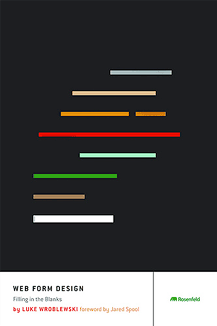The Value of Web Forms and Design Constraints
Senior Principal of Product Ideation and Design at Yahoo! Inc. and founder of LukeW Interface Designs Luke Wroblewski joins us to discuss how adding elements of constraint helps shape the design process. Luke also spends some time discussing the often-understated value of the HTML web form.
What goes into a redesign of a Yahoo! property?
- Define the strategic goals of the company
- Make a list of core behavior, expected needs and features users can be delighted by
- Add to list features user come to expect and must not be removed
- Prioritize performance, accessibility, instrumentation and monetization requirements
Creative Process is Given Life By Constraints
Web pages may be crafted to do just about anything – the trick is to build build appropriate constraints. The design team may use targeted use cases or place necessary performance constraints. Boxing the problem begins to help form the design process.
Art of removing Elements
When you are trying to get a message across you begin by adding elements. Often the design process turns a corner and you are adding information or design elements for the sake of the design. A better approach may be adding only the items necessary at a minimum to get the point across. If you can balance this practice with the business needs of the organization, you’ve found a winning design.
How to Manage Diverse Interests
The Yahoo! homepage has many stakeholders who want representation. The question developers and designer must grapple with is what is the right representation? During the early days at eBay many groups wanted to feature their deliverables at the point of sale. The design team ranked and prioritized features against the goals of the organization. This helped build consensus on what should and should not be in the final design.
The Value of Web Form Design
Luke tells us that every single defining characteristic of things you can do online is run through a web form. Whether you are looking to comment on an article, buy a product, sign up for a service, do some data entry, upload video or just about anything else on the web – you do it through a web form. In the end the form is a barrier to what people really want to do – interact somehow with the website. Therefore elegance in building an designing web forms is a necessity.
Check out Luke's book: Web Form Design: Filling in the Blanks
Gradual Engagement
Luke’s concept of gradual engagement encourages you not to hide your entire website behind a signup page. Rather us a conversational or natural flow of engaging with the user to gather profile information.
